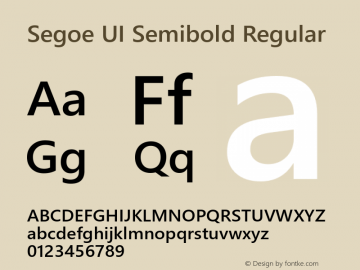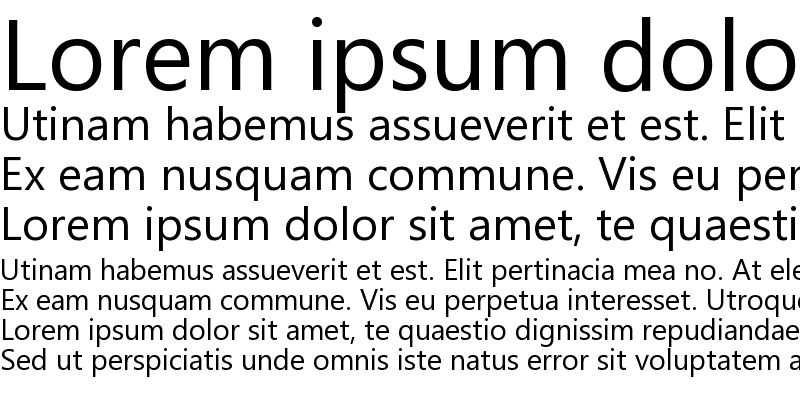

Myriad Hebrew is one of the most extensive families of Hebrew typefaces available today, comprising twenty different digital fonts: four weights, each with two italic complements plus an informal cursive version, also in four weights, with both upright and slanted variants. Myriad Hebrew is an extension of Adobe’s popular humanist sans-serif typeface Myriad, bringing the sensibility of Myriad into another language and another writing system.

Five weights of Myriad Arabic (which include Latin-alphabet characters) were licensed by Apple for inclusion with macOS, but must be manually enabled by the user. Myriad Arabic was designed by Robert Slimbach, with the help of Adobe’s technical team as well as outside Arabic experts. It can be found in the Fonts subfolder of the Resources folder under Adobe Reader 9 from the Program Files folder in the Local Hard Disk Drive. Myriad Currency is included in Adobe Reader 9 and is thought to be the company's embedded font for their currency typefaces. It is also available in the current Adobe Acrobat. MyriadCAD is included in Adobe Reader 9 and is thought to be an implementation of the ANSI CAD lettering. It supports Adobe Western 2 character set. Myriad Wild Std is the OpenType version of Myriad Wild. The family supports ISO-Adobe character set. Myriad Sketch is a slightly irregular outline version of Myriad, while Myriad Tilt incorporates irregular stroke weight and paths. Myriad Wild is an Adobe font package comprising the Myriad Sketch and Myriad Tilt fonts in Type 1 format. In Adobe Reader 9 and onwards, the fonts are included, but not installed in the system fonts directory.
Segoe ui font vs myriad pro pro#
Myriad Pro Regular, Bold, Italic and Bold Italic are bundled with Adobe Reader 7 and 8. A "semi-condensed" width was added in early 2002, expanding the family to forty fonts in four widths and five weights each, with complementary italics. Myriad Pro originally included thirty fonts in three widths and five weights each, with complementary italics.

Compared to Myriad MM, it added support for Latin Extended, Greek, and Cyrillic characters, as well as oldstyle figures. Additional designers were Christopher Slye and Fred Brady. It first shipped in 2000, as Adobe moved towards the OpenType standard. Myriad Pro is the OpenType version of the original Myriad font family. The family is bundled as part of the Adobe Web Type Pro font pack. Myriad Web Pro is slightly wider than Myriad Pro, while the width of Myriad Web Pro Condensed is between Myriad Pro Condensed and Myriad Pro SemiCondensed. Myriad Web comprises only five fonts: Myriad Web Pro Bold, Myriad Web Pro Regular, Myriad Web Pro Condensed Italic, Myriad Web Pro Condensed, Myriad Web Pro Italic. It supports Adobe CE and Adobe Western 2 character sets. Myriad Web is a version of Myriad in TrueType font format, optimized for onscreen use. Myriad Headline A "Headline" version was also released, which has the weight of Myriad Bold, but slightly narrower. The condensed fonts comprise three weights, with complementary italics. Myriad Condensed It was a condensed version, released around 1998. All these Type 1 versions supported the ISO-Adobe character set all were discontinued in the early 2000s. It initially included four fonts in two weights, with complementary italics. This PostScript Type 1 font family was released after the original Myriad MM. The concept has since been redeveloped as part of the OpenType variable fonts technology. The concept was not widely-supported by third-party applications, and so most releases of Myriad have been in the form of separate font files. The later Segoe UI and Corbel are also similar.ĭuring the 1990s, Adobe developed a release of Myriad in the multiple master format, an ambitious format intended to allow the user to fine-tune weight, width and other characteristics of the design to their preferred form. Myriad is similar to Adrian Frutiger's famous Frutiger typeface, although the italic is a true italic unlike Frutiger's oblique Frutiger described it as "not badly done" but felt that the similarities had gone "a little too far". Twombly described the design process as one of swapping ideas to create a "homogenous" design but said that in retrospect she found the experience "too hard" to want to repeat. As a family intended for body text and influenced by traditional book printing, text figures are included as well as lining figures at cap height. The 'g' is single-storey and the 'M' has sloped sides on the model of Roman square capitals. Its letterforms are open rather than "folded-up" on the nineteenth-century grotesque sans-serif model, and its sloped form is a " true italic" based on handwriting. Myriad is a humanist sans-serif, a relatively informal design taking influences from handwriting.


 0 kommentar(er)
0 kommentar(er)
